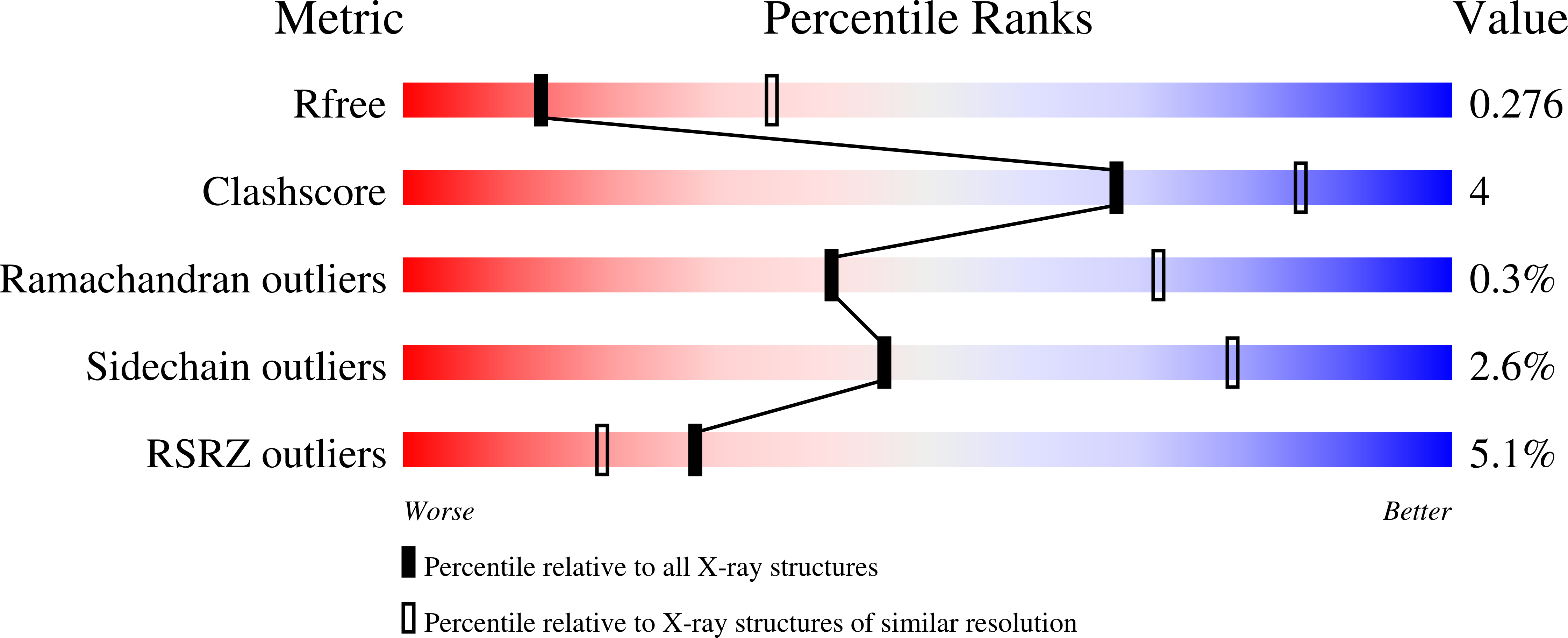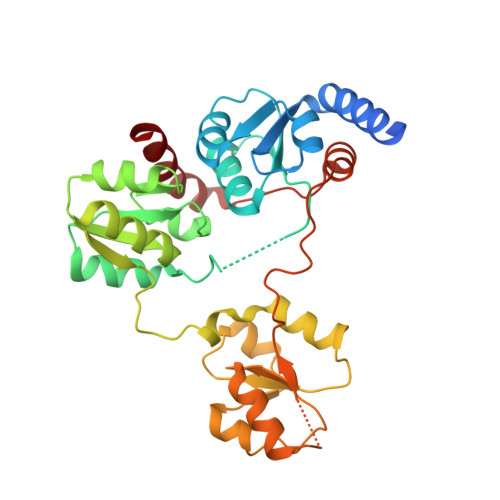Active-site models for complexes of quinolinate synthase with substrates and intermediates.
Soriano, E.V., Zhang, Y., Colabroy, K.L., Sanders, J.M., Settembre, E.C., Dorrestein, P.C., Begley, T.P., Ealick, S.E.(2013) Acta Crystallogr D Biol Crystallogr 69: 1685-1696
- PubMed: 23999292
- DOI: https://doi.org/10.1107/S090744491301247X
- Primary Citation of Related Structures:
4HHE - PubMed Abstract:
Quinolinate synthase (QS) catalyzes the condensation of iminoaspartate and dihydroxyacetone phosphate to form quinolinate, the universal precursor for the de novo biosynthesis of nicotinamide adenine dinucleotide. QS has been difficult to characterize owing either to instability or lack of activity when it is overexpressed and purified. Here, the structure of QS from Pyrococcus furiosus has been determined at 2.8 Å resolution. The structure is a homodimer consisting of three domains per protomer. Each domain shows the same topology with a four-stranded parallel β-sheet flanked by four α-helices, suggesting that the domains are the result of gene triplication. Biochemical studies of QS indicate that the enzyme requires a [4Fe-4S] cluster, which is lacking in this crystal structure, for full activity. The organization of domains in the protomer is distinctly different from that of a monomeric structure of QS from P. horikoshii [Sakuraba et al. (2005), J. Biol. Chem. 280, 26645-26648]. The domain arrangement in P. furiosus QS may be related to protection of cysteine side chains, which are required to chelate the [4Fe-4S] cluster, prior to cluster assembly.
Organizational Affiliation:
Department of Chemistry and Chemical Biology, Cornell University, Ithaca, NY 14853-1301, USA.















